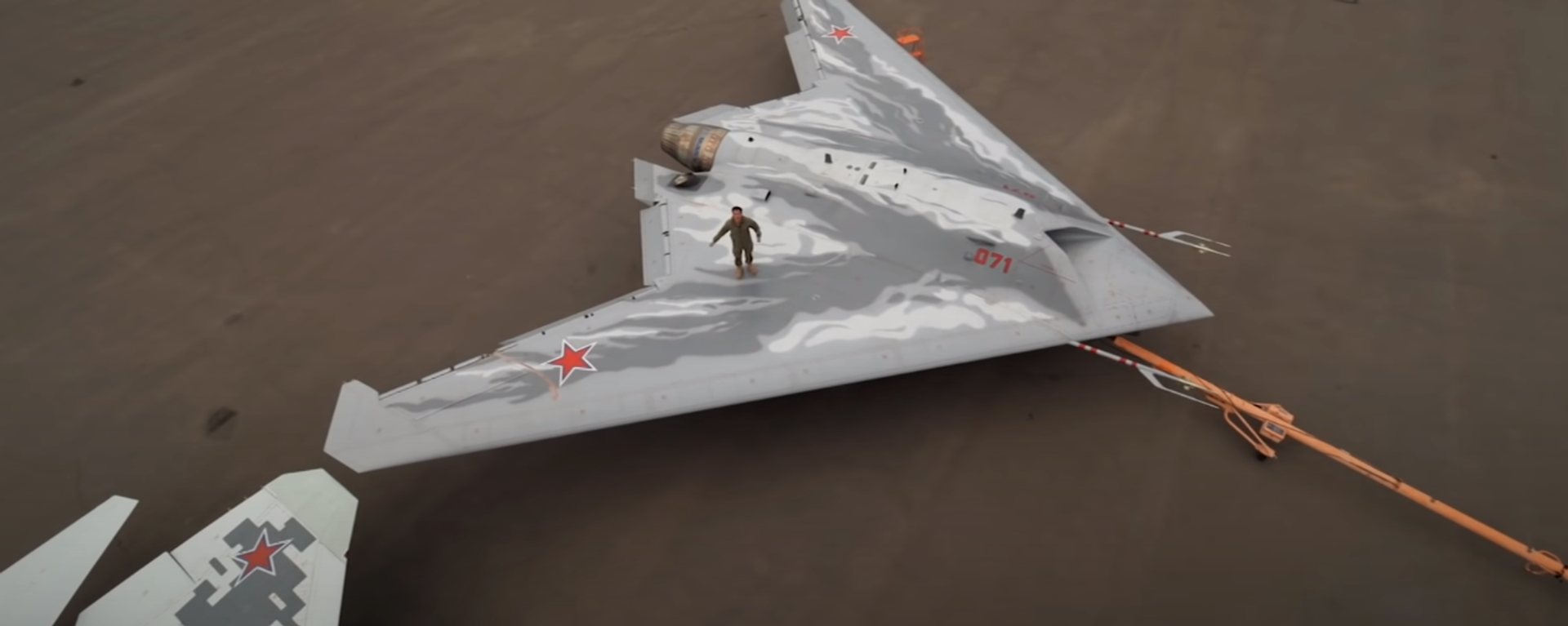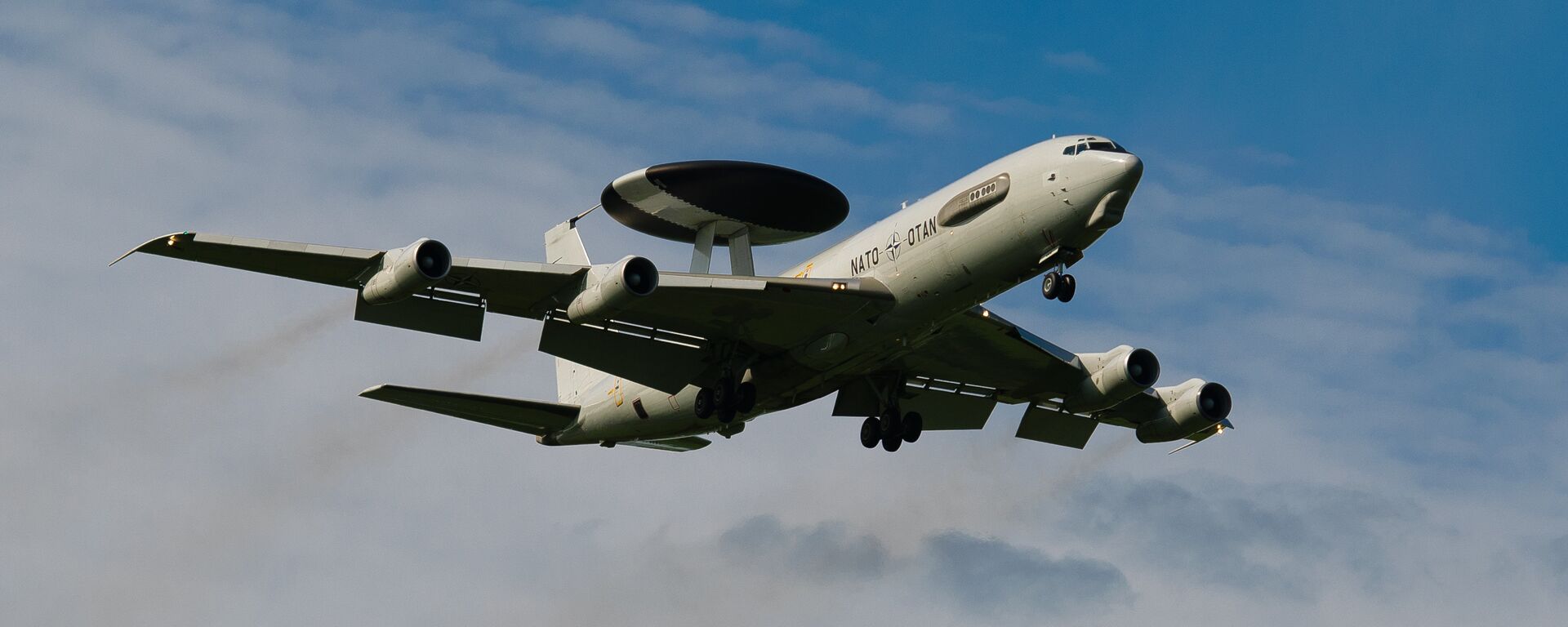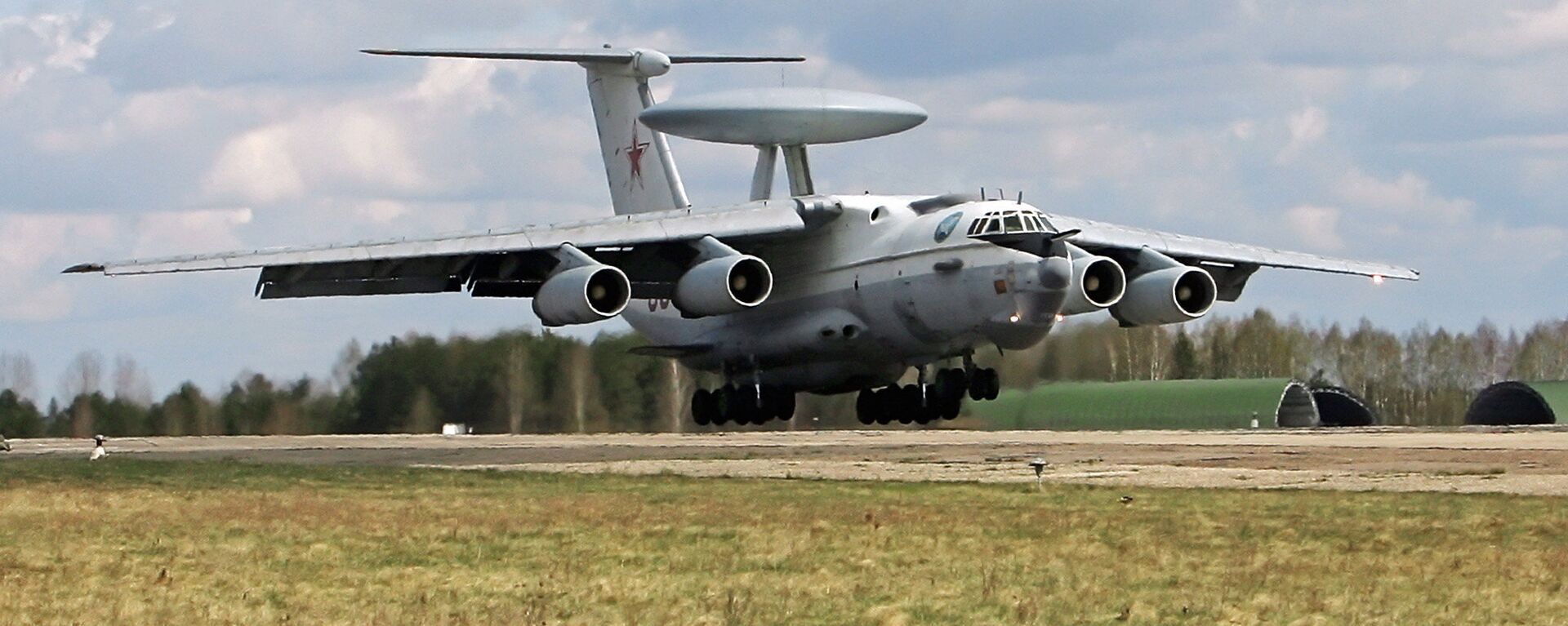https://sputnikglobe.com/20211106/us-media-reveals-russian-militarys-secret-weapon-1090529043.html
US Media Reveals Russian Military’s Secret Weapon
US Media Reveals Russian Military’s Secret Weapon
Sputnik International
The Pentagon categorises countries such as Russia and China as "near-peer" adversaries or threats. However, in some emergent technologies, Moscow and Beijing... 06.11.2021, Sputnik International
2021-11-06T16:36+0000
2021-11-06T16:36+0000
2021-11-06T16:47+0000
beriev a-50u
https://cdn1.img.sputnikglobe.com/img/105871/95/1058719535_27:0:1254:690_1920x0_80_0_0_8c96e59b42be4e95fd45c887734cefd7.jpg
The Beriev A-50U, the deeply modernised version of Russia’s A-50 "flying radar" reconnaissance aircraft, will play an important role in ensuring the effectiveness of Russia’s military intelligence capability on the battlefield, National Interest contributor Mark Episkopos believes.In a recent article for the magazine’s website, Episkopos listed off the A-50U’s key features, like its ability to track ground targets at ranges up to 300 km, and aerial targets up to 650 km away thanks to the Shmel-M (literally "Bumblebee-M") – the plane’s onboard, rotating, mushroom dome-shaped radar tracking system. The new radar complex also has a missile launch detection range of up to 1,000 km.The A-50U is an upgrade to the A-50, a Soviet-era Airborne Early Warning and Control aircraft that first entered service in the late 1980s. The planes are built on basis of the Il-76MD military transport – the workhorse multi-purpose four-engine turbofan strategic airlifter designed by the Ilyushin Design Bureau.Episkopos points out that unlike the A-50, which features analogue inputs, “the A-50U boasts a fully digitized system” of radar control, “which makes it easier and faster to use while minimising the risk of operator error.”Along with the completely replaced onboard computers, the upgraded aircraft also feature more reliable uplink to satellite communications equipment, with data volume and quality characteristics increased significantly, and the navigation system also improved. Smaller upgrades include new large onboard LCD monitors, and improved ergonomics for flight crews, including a redesigned interior and rest area and kitchen.In addition to their ability to detect, identify and track aerial, ground and sea targets, and issue information about them to command posts, the aircraft can also serve as its own command posts.Outwardly, the A-50U is similar to the US’s Boeing E-3 Sentry. However, the American plane features a pulse-Doppler radar with a range of about 375 km for low-flying targets, and a pulse radar to track aircraft at medium and high altitudes at ranges up to 650 km. The planes also have lookdown capability, making them able to detect and track ground and sea-based targets at a range of 320 km. E-3s have received several rounds of upgrades, with NATO recently extending the planes’ lifetime until at least 2035 – with things like expanded data capacity, satellite communications bandwidth, and new encryption equipment. The aircraft were originally introduced into service in 1977.Episkopos suggests it has yet to be seen how the Russian and US planes compare in real performance.The A-50U’s modernisation was carried out by the Beriev Aviation Plant and the Vega Radio Engineering Concern – a company specialising in military radar, surveillance, and command and control systems.The Aerospace Forces expect to receive the seventh modernized A-50U by the end of 2021, with the sixth plane of its kind delivered in March. A total of 68 E-3 Sentries have been built, with 31 of them used by the US Air Force, and most of the rest (barring the three lost in accidents) exported to NATO, France, Britain, and Saudi Arabia.
https://sputnikglobe.com/20160627/russian-us-awacs-capabilities-analysis-1042020932.html
https://sputnikglobe.com/20211023/us-media-dubs-russias-okhotnik-drone-beast-that-could-pose-big-problem-for-nato-1090160603.html
https://sputnikglobe.com/20210226/pentagon-leaders-cant-decide-to-replace-falling-apart-e-3-early-warning-plane-1082200518.html
Sputnik International
feedback@sputniknews.com
+74956456601
MIA „Rossiya Segodnya“
2021
News
en_EN
Sputnik International
feedback@sputniknews.com
+74956456601
MIA „Rossiya Segodnya“
Sputnik International
feedback@sputniknews.com
+74956456601
MIA „Rossiya Segodnya“
beriev a-50u
US Media Reveals Russian Military’s Secret Weapon
16:36 GMT 06.11.2021 (Updated: 16:47 GMT 06.11.2021) The Pentagon categorises countries such as Russia and China as "near-peer" adversaries or threats. However, in some emergent technologies, Moscow and Beijing have taken the lead, introducing arms into active duty service which are yet to be adopted by the US military-industrial complex.
The Beriev A-50U, the deeply modernised version of Russia’s A-50 "flying radar" reconnaissance aircraft, will play an important role in ensuring the effectiveness of Russia’s military intelligence capability on the battlefield, National Interest contributor Mark Episkopos believes.
In a recent
article for the magazine’s website, Episkopos listed off the A-50U’s key features, like its ability to track ground targets at ranges up to 300 km, and aerial targets up to 650 km away thanks to the Shmel-M (literally "Bumblebee-M") – the plane’s onboard, rotating, mushroom dome-shaped radar tracking system. The new radar complex also has a missile launch detection range of
up to 1,000 km.
The system can track about 300 ground targets or forty air targets simultaneously. The A-50U also features improved flight range characteristics of 15-20 percent above those of its predecessor thanks to the reduced size and weight of its onboard radio-electronic equipment, and subsequent reduced engine load.
The A-50U is an upgrade to the A-50, a Soviet-era Airborne Early Warning and Control aircraft that first entered service in the late 1980s. The planes are built on basis of the Il-76MD military transport – the workhorse multi-purpose four-engine turbofan strategic airlifter designed by the Ilyushin Design Bureau.
Episkopos points out that unlike the A-50, which features analogue inputs, “the A-50U boasts a fully digitized system” of radar control, “which makes it easier and faster to use while minimising the risk of operator error.”
“As with many of the recent additions to Russia’s aircraft lineup, the A-50U was deployed in Syria through 2018,” engaging in rigorous field testing and helping to monitor de-escalation zones, the contributor wrote, pointing out that the past deployment of the original A-50 in 2015 provided the Russian Aerospace Forces with “a unique opportunity to compare the real-use performance of the 50 and 50U side by side.”
Along with the completely replaced onboard computers, the upgraded aircraft also feature more reliable uplink to satellite communications equipment, with data volume and quality characteristics increased significantly, and the navigation system also improved. Smaller upgrades include new large onboard LCD monitors, and improved ergonomics for flight crews, including a redesigned interior and rest area and kitchen.
In addition to their ability to detect, identify and track aerial, ground and sea targets, and issue information about them to command posts, the aircraft can also serve as its own command posts.

23 October 2021, 16:36 GMT
Outwardly, the A-50U is similar to the US’s Boeing E-3 Sentry. However, the American plane features a pulse-Doppler radar with a range of about 375 km for low-flying targets, and a pulse radar to track aircraft at medium and high altitudes at ranges up to 650 km. The planes also have lookdown capability, making them able to detect and track ground and sea-based targets at a range of
320 km. E-3s have received several rounds of upgrades, with NATO recently extending the planes’ lifetime until at least 2035 – with things like expanded data capacity, satellite communications bandwidth, and new encryption equipment. The aircraft were originally introduced into service in 1977.
Episkopos suggests it has yet to be seen how the Russian and US planes compare in real performance.

26 February 2021, 21:11 GMT
The A-50U’s modernisation was carried out by the Beriev Aviation Plant and the Vega Radio Engineering Concern – a company specialising in military radar, surveillance, and command and control systems.
The Aerospace Forces expect to receive the seventh modernized A-50U by the end of 2021, with the sixth plane of its kind delivered in March. A total of 68 E-3 Sentries have been built, with 31 of them used by the US Air Force, and most of the rest (barring the three lost in accidents) exported to NATO, France, Britain, and Saudi Arabia.




